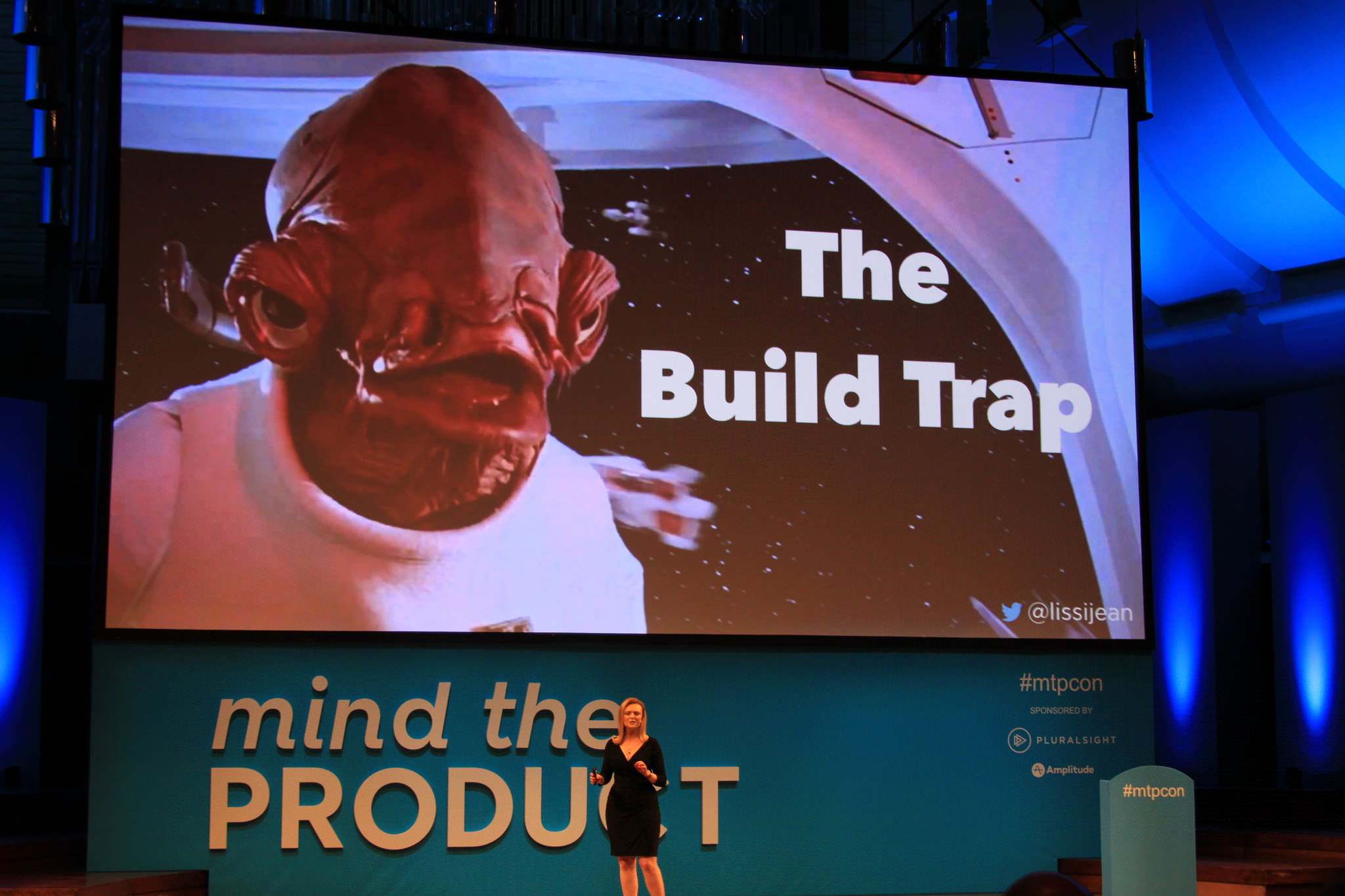Escaping the Build Trap by Melissa Perri [Mind the Product]

Like most of us, when Melissa Perri started as a product manager she started with giant requirements documents, dutifully recording every little detail from stakeholders and turning them into shiny docs for the developers. Then she discovered Agile and churned out features even faster. But eventually she realised that she had been building features for years and never been quite sure whether users actually liked them or used them.
Melissa calls this the Build Trap, and a lot of product teams are stuck in it. They’re defining and shipping software with no measures of success, too busy managing the backlog, and focusing on getting features out the door. Too focused on building any thing rather than the right thing.
In this insightful talk from Mind the Product San Francisco 2017, Melissa shares how to identify whether you are in the build trap – and more importantly what we can do as product leaders and product managers to escape it.
So how do we find ourselves in the endless loop of maximising the amount of things we build and ship, instead of maximising the value of what we build? It starts the misconception that develop products is a linear process. Companies believe that feature ideas + code = profit. So if we just keep product managers shovelling requirements to the developers, and keep developers shovelling features out the door, all will be fine.
But developing products is part of a system. It’s a value exchange. Businesses create products or services to solve the problems, needs, or wants of customers. The customers only realise the value when the problems are solved, the wants are realised, and the needs are met. Then they give value to the companies in return, in the form of money or data. Solving big problems for customers is what creates big value for businesses and it’s the product manager’s job to optimise the value on both sides. But in order to do that we have to understand the external and internal factors that affect the value on both sides.
There are external influences on the customer side that are found through different discovery processes – understanding these influences helps us get inside the minds of our customer, and alter the way we approach and understand them. As an industry we are finally focusing product management time on discovery but, as important as it is to be able to identify and speak to these external influences, we ultimately have very little control or influence over them.
What we can control, and where we need to focus our efforts just as hard, is internal influences – the ones inside our businesses. Melissa argues that the three main internal factors boil down to process, strategy, and culture.
Process – Agile is not the answer to all of our prayers because Agile does not have a brain. Agile is great at telling you how to work together to build software, but it does not, and never has, told you what to build. We need more than just Agile to build great products. We need good product management processes that help us navigate the uncertainty of building products. We as humans are really uncomfortable with uncertainty, so we try to fill that gap as quickly as possible, and usually jump to the most obvious product solution way too early. As product managers, we need to be the champions of recognising and embracing uncertainty inside the company, and guide our teams to use the right processes at the right times.
Strategy – Many companies do not have a strategy that supports good product management and allows product managers to be effective. They think strategy is a plan to execute on a bunch of features, or a laundry list of requirements that they just have to check off. But good strategy, stemming from a clear vision and mission, is essential for product management teams because it helps them to navigate the uncertainty of product development, and promotes alignment throughout the organisation.
Culture is the glue that holds great product management together, and yet the thing that often keeps us in the Build Trap, even when we have solved the process and strategy pieces. In order to escape the build trap, we need to create a customer-centric organisation that rewards learning and reaching outcomes, rather than focusing on outputs.
Watch this great talk to learn how to be a catalyst for good product management process, strategy, and culture in your business. Start talking about what you’ve learned more than what you’ve built. Say “I don’t know”. Talk to your customers and build empathy for them within your teams. And if anyone in your company tries to tell you to blindly follow an Agile process, remind them that Agile is not enough.
The post Escaping the Build Trap by Melissa Perri appeared first on Mind the Product.
Source: Mind the Product http://ift.tt/2tPy4qv

Post a Comment